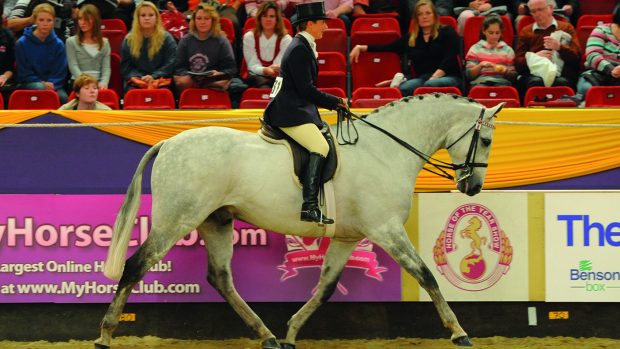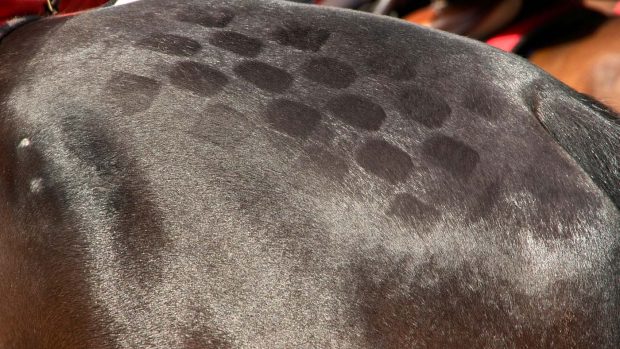Do you know your hacks from your riding horses, how a Dartmoor feels compared to a Dales and why a good walk is so important? The answer should be ‘yes’ if you want to succeed in the showring and we’ve put together four handy tips:
1. Understand your horse’s type
Know your horse’s type and show off their natural assets. If you’re unsure, watch an expert in action or ask them for advice.
“I like a riding horse to move with more purpose than a hack — it’s not there to look pretty,” says Jo Bates, a winner of numerous titles on hacks, riding horses, cobs and hunters. “Both types must be light and responsive, but a riding horse should have more power.”
Remember that each native breed moves and carries itself differently.
“Do not expect a Dartmoor to keep up with a Dales, or an Exmoor to move like a Welsh cob,” says Olympia’s reigning BSPS Heritage supreme champion Sam Roberts. “The canter needs to be forward, with an open and balanced stride that covers the ground. Native ponies aren’t riding hacks.”
Although traditionally thought of as safe and reliable, cobs should be light and flexible, too.
“They should work in self-carriage and show suppleness and have ground-covering, low movement,” says rider and judge Simon Reynolds. “They mustn’t be overly fat — even show cobs should be capable of doing a day’s work.”
2. Have a plan
Plan your individual show carefully. Making use of corners and riding wide turns is better than hairpin bends, which interrupt your mount’s rhythm and flow. Also be careful not to push your horse or pony out of its natural rhythm.
According to show pony breeder and judge Ann Fowler, who founded the successful Broadgrove Stud, this causes your show to look disjointed, rather than harmonious.
“Often rhythm is mistaken for speed; you want to go forward but do not rush or push him too fast,” adds Sam Roberts.
3. Don’t underestimate the importance of the walk
Your individual show is your chance to shine, but it can also highlight common mistakes, particularly at walk. The importance of this pace is often overlooked, but equines should show a natural free walk at the start and end of their individual shows.
“The first time the judge will see you is at walk, so make sure the walk is purposeful, active and free,” says Sam.
4. Make sure your horse is well schooled
It goes without saying that rideability is essential in the showring and the better schooled your horse is, the more likely the judge is to enjoy riding him.
Judge and producer Vicky White finds that a lot of horses arrive at her yard stiff through their ribcage and are therefore “unable to flex correctly in either direction”.
She has one simple exercise that helps encourage flexibility and suppleness:
- Make a square on the ground using poles, with gaps at the corners so you can ride in and out of the box
- Enter the box and bend your horse left or right using the correct legs aids, exiting at another corner
- Increase the difficulty by making the square smaller or doing the exercise in trot.
More tips on showing hunters and workers





